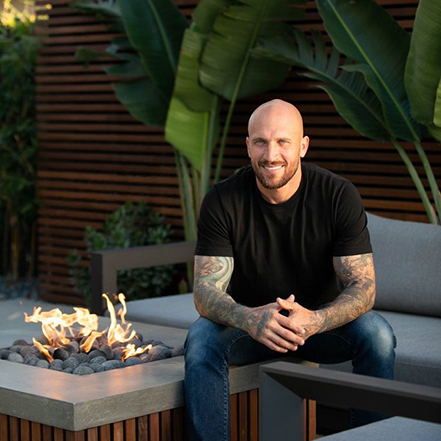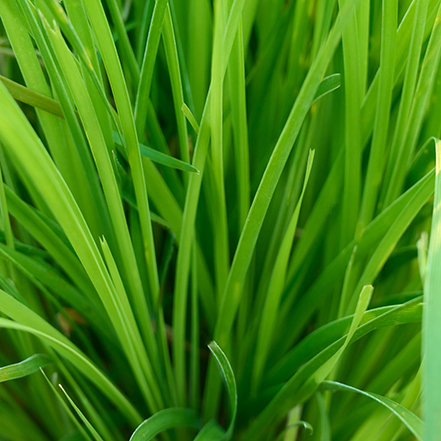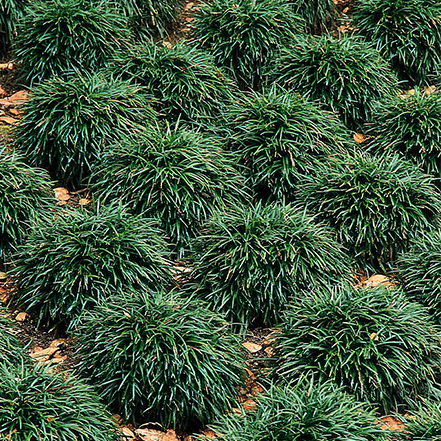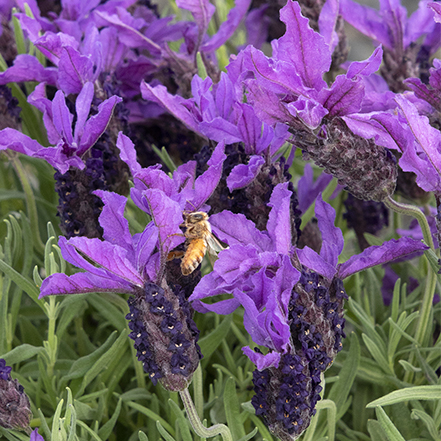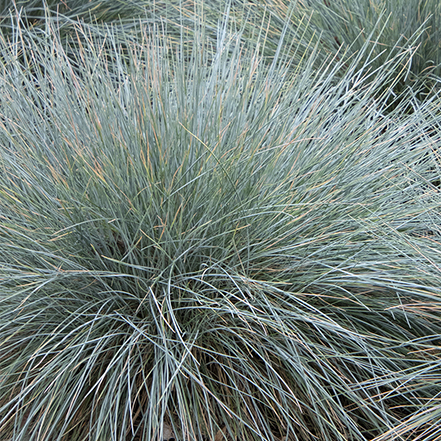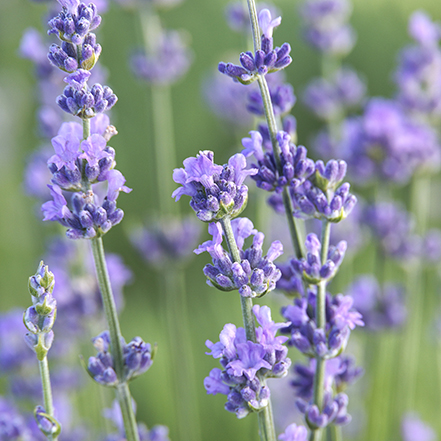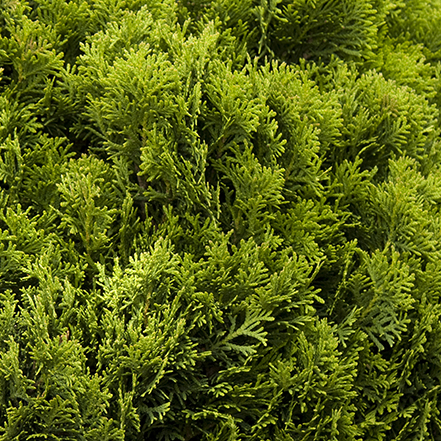Join us in a conversation with HGTV host and landscape designer, Mike Pyle, as we explore his brand new front yard landscape and discuss how to make small changes in your front yard to achieve big curb appeal.
Recently settling into a new home in Southern California, Mike wasted no time in undertaking a complete front yard makeover. Given his expertise in front yard design, curb appeal, and transformative design, we couldn't think of a better person to ask for design tips and inspiration to help you as you tackle your own front yard projects.
Looking for more curb appeal inspiration and design tips? Find free landscape plans, plant lists, and flexible design formulas in our Front Yard Design Guide.
Our journey to a better front yard starts with a 1-on-1 conversation with Mike about his personal front yard re-do, and what we can learn from his approach to designing functional and beautiful spaces.
Then, we wrap up with Mike's top small projects for big curb appeal, his top design tips, and finally his favorite plants for his front yard landscapes. Let's get started!
Make Coming Home Feel Even Better

What were your goals with your front yard re-design?
First, we really wanted to create an experience. I think it's important to come home to something that you're proud of. When you turn the corner and see your home, you want to feel joy. I wanted to put a lot of pride and care into what we're coming home to every day.
Secondly, it's important have something that will pull you out of the house so you actually spend time in your front yard and not just walk by it.
Most importantly, the goal was for the space to be functional for our family of four, including our two little ones.
Is there a style or theme that inspired your design?
The house is a coastal cottage so I went with a kind of Nantucket theme, with gravel,grasses, lavenders, and a picket fence. The picket fence is made of a patinaed western cedar and the pickets are cut in a Nantucket style.
We really wanted to have old mixed with new, mixing the new limestone pathway, water feature, and firepit with the old brick pavers, and cottage style of the house.
In the end, it evolved into an organic space that functions well for our family.
Front Yard Living

What design elements accomplish your goal of pulling people out of the house and into the front yard?
We added a fire pit in the front to create an easy gathering place. The fire pit zone is great for doing s'mores with the kids, or having cocktails with guests. Then, have an artificial turf area on the right side of the yard that allows for outdoor play.
It's all about front yard living here, so I really wanted to keep the space open and inviting.
What is the plant palette for your front yard?
My plant palette is constantly changing because my garden is always evolving. I'm always moving something or changing something out or finding something that works better. I never do it once and leave it.
The plants currently in my yard include Little Ollie® Dwarf Olive, Breeze™ Dwarf Mat Rush, Arctic Frost Mat Rush, Taiwan Mondo Grass, Dwarf Mondo Grass, Goodwin Creek Gray Lavender, Anouk Spanish Lavender, and Orange New Zealand Sedge.
How do you use hardscape elements to create a cohesive design?
I always start the design process with function, and the hardscaping is what builds that function into the landscape. When you're designing a front yard, you're considering a different function of the landscape than when you're designing a backyard. So for the front yard especially, you want to stay away from narrow pathways. In the front yard, you'll often have children running around, people walking side-by-side, or someone carrying a suitcase; you want to make sure that you're creating pathways that accommodate that kind of traffic. Scale is extremely important for your space to function appropriately.
Not using just one hardscape element throughout is important to me. So at my house, we have flagstone leading up to a brick porch, we have gravel mulch and pebbles in between flagstones. I like to use two or three hardscape materials to create some contrast and excitement.
Then, once you have your functional hardscape figured out, you can build the aesthetics and plant palette from there.

What are some of your favorite plants to use in designs for clients?
I love to use grasses. Anything from carex, autumn moor grass, fescue, mondo grass, moor grass, mat rush. I also use a lot of lavenders. Dwarf plants make up a lot of my plant palette, because they are lower maintenance and won't overtake the space. I love Little Ollie® Dwarf Olive and dwarf forms of pittosporum.
I like to use agave and other succulents, as well. Succulents are slower growing so I like to plant them next to a plant like salvia that grows quickly and compensates for the slow growth of the neighboring succulents.

How do you keep a landscape design low maintenance?
The most important thing is the proper plant layout. Having a lot of dwarf varieties in your plant selection and understanding plant growth is huge. You're installing plants that are half the size (or smaller) of what they will be at maturity, so you need to plan for what your landscape will look like at maturity.
Don't plant for what it looks like on day one. Allow space for plants to grow and for the garden to evolve.
Mike's Top 5 Small Projects That Make a Big Impact on Curb Appeal

When you're thinking about a front yard project that will make a big impact, you want to think about creating spaces that pull you outside and invite you to spend more time out enjoying your space. A few of Mike's ideas include:
- Create a seating area. Extend your front porch or entryway to create a front seating area that accommodates chairs and makes you want to spend more time in your front yard. You can also add a hedge as a "green wall" to create a courtyard sitting area. If you prefer more privacy in your front yard, this is a great way to accomplish that so you don't feel so exposed when you're out enjoying your front yard.
- Add a water feature. Water features instantly create a tranquil environment, and add a visual as well as an auditory element to the garden.
- Add a fire pit. Fire pits are magnetic and tend to pull people in. Most people think of fire pits as a backyard feature, but Mike says he loves having one in the front yard.
- Upgrade your landscape, one area at a time. Add or update a border, switch out plants, add a specimen tree, and chip away at your lawn by replacing your grass with plants.
- Add lighting. Many people forget what an impact lighting can have on their curb appeal. The right exterior lighting can make a world of difference.
Mike's Top 5 Tips for Designing Front Yards
- Just get started. Sometimes people hold themselves back because they are worried about the time and/or money involved in updating a landscape. Don't be afraid to start by simply getting a plan in place. It doesn't all have to happen at once, so don't let the scale of what you'd like to accomplish scare you. There are several small things you can focus on that can make a big difference.
- Know what you want to accomplish and make a plan. Plans are extremely important for pulling a design together, even if it takes several years. Have a plan in place before you start on even the smallest project.
- Don't sell yourself short on your dream design. Don't let your budget get in the way of a long-term plan. You can always start small and build from there, but do it right the first time.
- Function first. You want to make your day-to-day better with a functional and beautiful outdoor space. Consider what you're using the space for and start your design there.
- Get to know your plants. Know how large they will get, what kind of maintenance they need, and how you can keep the blooms coming (Mike loves to cut flowers to encourage more blooms).
Get the Look with Mike's Favorite Plants for Front Yards
Wheeler's Dwarf
Japanese Pittosporum
This dwarf, rounded shrub is perfect as a carefree, low border, groundcover or container specimen. The dense, compact growth has glossy evergreen foliage and occasionally produces small orange blossom-scented flowers. Part to full sun. Up to 3' tall, 5' wide. Zones 8-11.
Huntington Carpet
Rosemary
A beautiful carpet of deep blue flowers backed by green, fragrant foliage that forms an attractive spreading groundcover. This waterwise evergreen shrub is outstanding for cascading from retaining walls or planters. Full sun. Up to 2' tall, 8' wide. Zones 8-10.
Little Ollie®
Dwarf Olive
Dwarf, non-fruiting evergreen with a graceful, multi-branching habit. Deep green leaves have silvery green undersides. Attractive as a formal hedge or specimen shrub. Heat, drought, and salt tolerant. Full sun. Up to 6' tall and wide. Zones 8-11.
Breeze™ Dwarf
Mat Rush
A tough, easy-care, grass-like plant for mass plantings, dry borders and containers. A wonderful, versatile, drought and salt spray tolerant alternative to liriope and low-growing shrubs. Evergreen above 10 degrees Fahrenheit. Part to full sun. Up to 3' tall and wide. Zones 8-11.
Dwarf Mondo
Grass
This dwarf variety, only half the size of others, creates a lush groundcover of dense, dark green, grass-like clumps. Excellent as an edging plant or tucked into rocks for a pleasing contrast. Striking in mass plantings in the landscape. Part to full sun. Up to 6" tall and wide. Zones 6-11.
Javelin Forte™ Deep
Purple Spanish Lavender
A choice new early flowering variety with a profusion of larger purple summer flowers with deep purple bracts, and a robust, rounded, mounding habit of fragrant, gray-green foliage. Great carefree, heat and drought-tolerant color. Full sun. Up to 20" tall, 18" wide. Zones 7-9.
Get the Look with Cold Hardy Plant Picks (Zones 5+)
Elijah Blue
Fescue
The outstanding, icy blue coloration of this clumping ornamental grass holds up even through the heat of summer. Perfectly suited for edging borders or mass planting as a groundcover. Drought tolerant when established. Full sun. Up to 12" tall and wide. Zones 4-11.
Danica
Arborvitae
A versatile, dwarf, globe-shaped conifer featuring bright emerald green foliage that turns blue-green in winter. Smaller even than the popular Hetz Mini Arborvitae, Danica is an excellent choice for borders, foundation plantings, or low hedges. Full sun. Up to 2' tall, 2' wide. Zones 4-8.
About the Designer
With over 20 years in the landscape industry, Mike Pyle, formerly based in Palm Springs, CA, gained hands-on experience running his own landscape construction company. Now located in Orange County, CA, he manages Mike Pyle Design, a Landscape Design firm offering unique and drought-tolerant landscape designs nationwide.
As co-host of HGTV's Inside Out for the past two years, Mike collaborates with clients on home renovations, delivering stunning spaces within their budgets. You can follow Mike on Instagram to see more of his front yard makeover and upcoming projects.
